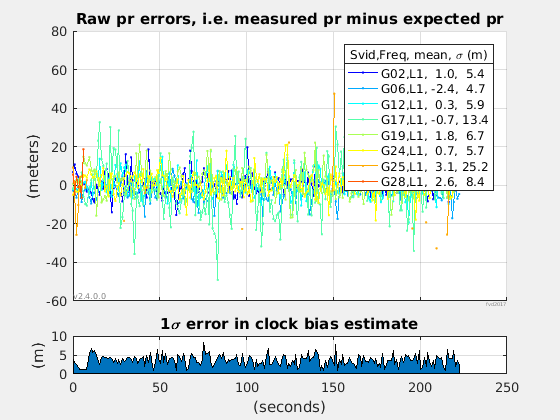This analysis is for a stationary receiver, with open sky.
Data directory:
~/Desktop/GnssAnalysisFiles/demofiles/
Log file: GNSSRESULTS.param.prFileName
GnssLogger: v1.4.0.0
GNSS Analysis App: v2.4.0.0
Phone: Google Model: Nexus 5
Android version: 7.0
API.
GnssClock Errors. None. GnssMeasurement Errors. None.
PASS
Received Signal Analysis.
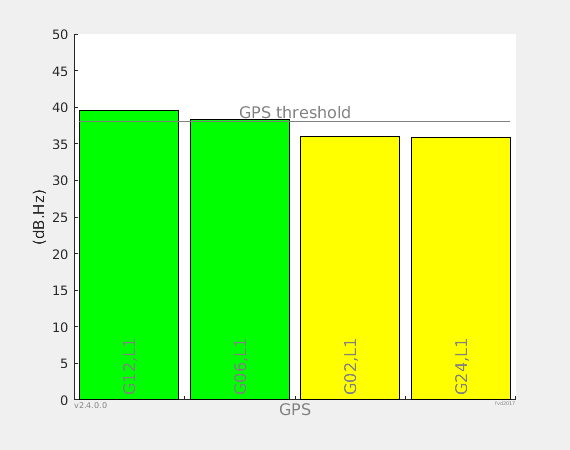
GPS, mean of strongest 4 median C/No = 37.4 dBHz Pass/fail reference threshold = 38.0 dBHz Errors. Signals -0.6 dB compared to reference FAIL BECAUSE OF WEAK SIGNALS
FAIL
Receiver Clock Analysis.
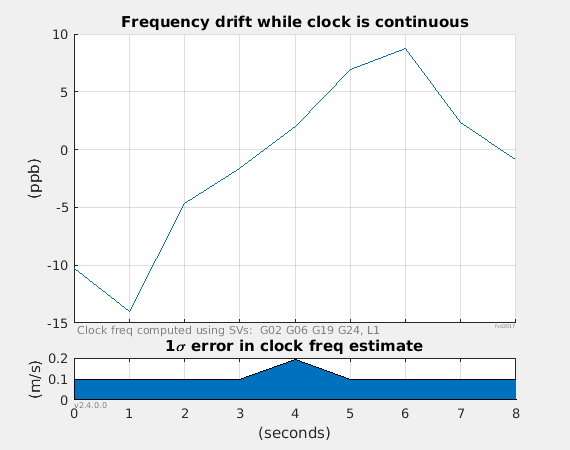
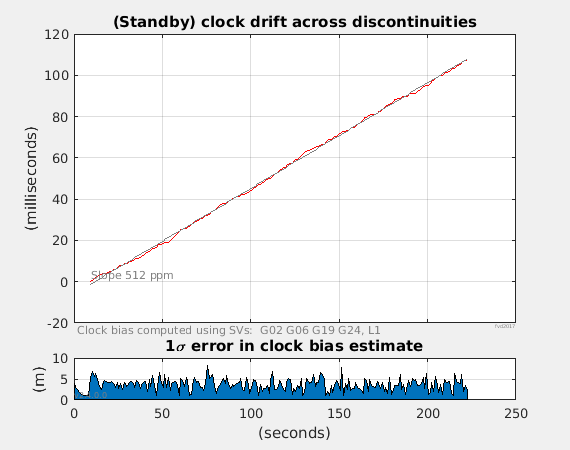
|GNSS receiver clock rate|, max, 13.99 ppb |GNSS receiver clock drift rate|, not enough continuous data |Standby clock rate|, 512.22 ppm
Pseudorange Analysis.
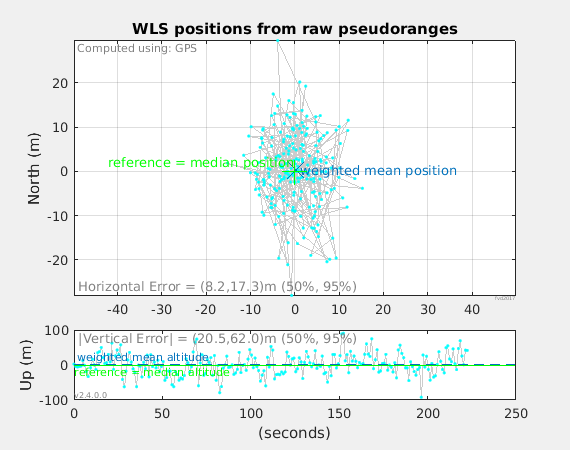
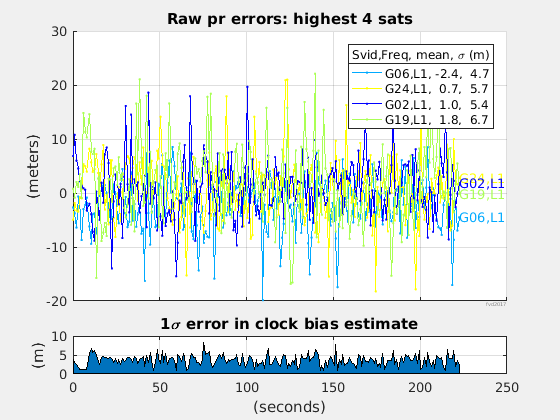
|Error| of weighted mean position from reference = median position, 0.5 meters |Raw PR errors| 95% < 14.0 meters
PASS
These plots show 1) Satellites available above the horizon 2) Carrier to Noise Density ratio (C/No) of the strongest satellites (bar graph) 3) C/No of all satellites (line graph) Each bar in the bar graph shows the median C/No for that satellite signal.
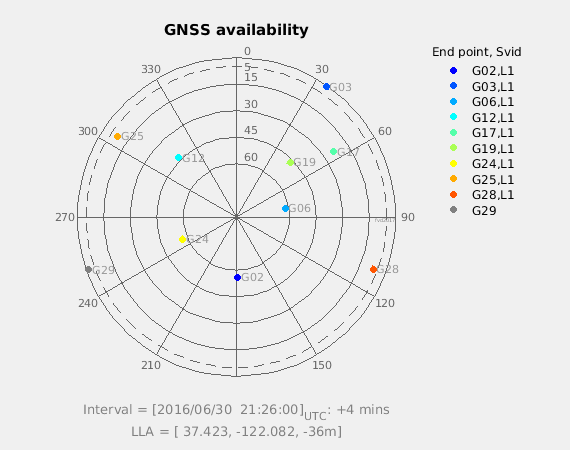
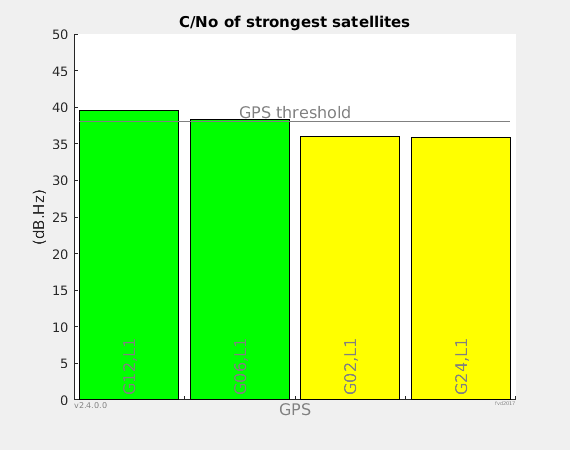
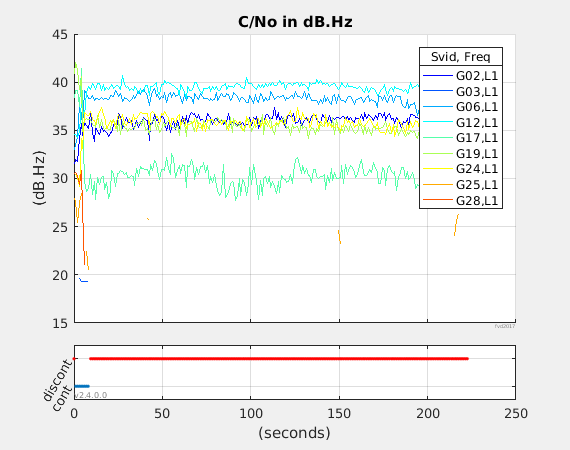
The GPS reference threshold is set to 38 dBHz. Well built phones, in open sky, have GPS satellites stronger than this threshold. GLONASS threshold is 2.5dB lower, since GLO signal is 2.5dB weaker, (see GPS and GLONASS ICDs). For your log file the C/No results are: GPS, mean of strongest 4 median C/No = 37.4 dBHz Pass/fail reference threshold = 38.0 dBHz Errors. Signals -0.6 dB compared to reference FAIL BECAUSE OF WEAK SIGNALS
This plot shows the clock frequency offset while the receiver is continuously tracking satellites. Clock drift rate is computed for continuous intervals > 20 samples. Frequency offset within +- 500 ppb, and drift rate within +- 2 ppb/s is consistent with good TCXO behavior.
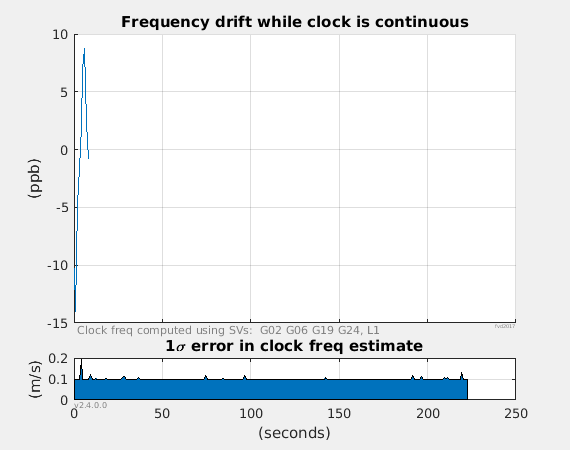
For your log file the continuous clock behavior is: |GNSS receiver clock rate|, max, 13.99 ppb |GNSS receiver clock drift rate|, not enough continuous data
The next plot shows the (standby) clock drift across discontinuities. This includes the clock behavior while duty-cycling.
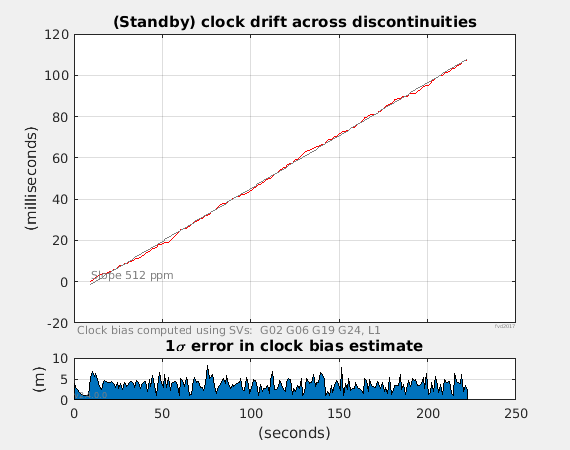
For your log file the standby clock behavior is: |Standby clock rate|, 512.22 ppm
This plot shows the WLS (Weighted Least Squares) position solution, using the raw GNSS pseudoranges.
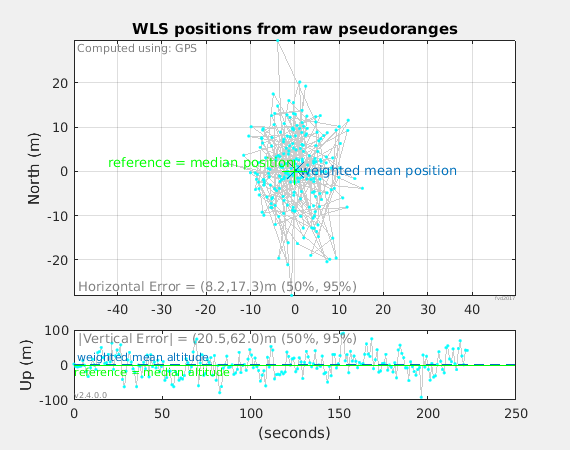
In open sky the expected WLS horizontal scatter is about 10 to 20 meters for raw pseudoranges. Larger when near buildings. The next plots shows the pseudorange errors, that is: the measured pseudorange minus the expected pseudorange, computed using the reference position
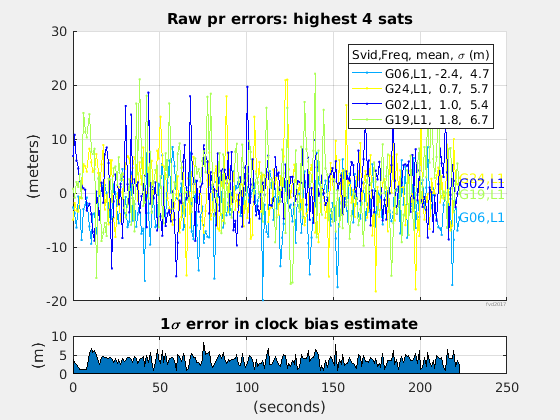
Errors are computed from raw pseudoranges. Under open sky, errors for high satellites should be < 50 meters (95%). For your log file the error analysis results are: |Raw PR errors| 95% < 14.0 meters PASS The next plot shows the errors for all GNSS satellites. The low satellites often have larger errors from multipath and unmodeled atmospheric delays.
